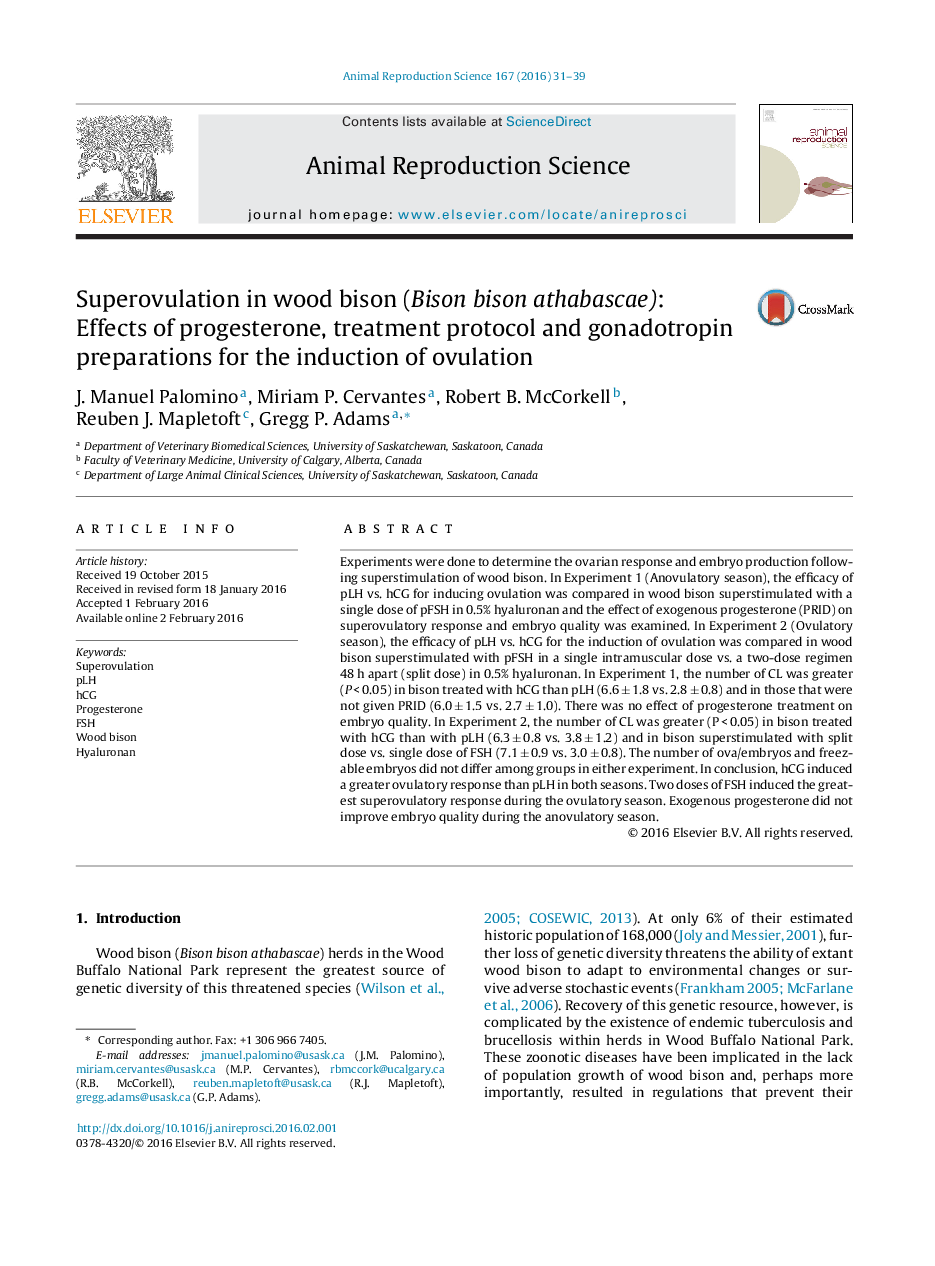| Article ID | Journal | Published Year | Pages | File Type |
|---|---|---|---|---|
| 2072606 | Animal Reproduction Science | 2016 | 9 Pages |
•hCG induced a greater number of corpora lutea (CL) during the ovulatory and anovulatory season.•Split dose of FSH in 0.5% of hyaluronan induced a greater number of CL during the ovulatory season.•There was no effect of progesterone treatment on embryo quality during the anovulatory season.•Superovulation and ova/embryo collection were feasible in wood bison and could be useful in efforts to conserve the genetic diversity of the species.•Reasons for a low embryo recovery rate remain unclear.
Experiments were done to determine the ovarian response and embryo production following superstimulation of wood bison. In Experiment 1 (Anovulatory season), the efficacy of pLH vs. hCG for inducing ovulation was compared in wood bison superstimulated with a single dose of pFSH in 0.5% hyaluronan and the effect of exogenous progesterone (PRID) on superovulatory response and embryo quality was examined. In Experiment 2 (Ovulatory season), the efficacy of pLH vs. hCG for the induction of ovulation was compared in wood bison superstimulated with pFSH in a single intramuscular dose vs. a two-dose regimen 48 h apart (split dose) in 0.5% hyaluronan. In Experiment 1, the number of CL was greater (P < 0.05) in bison treated with hCG than pLH (6.6 ± 1.8 vs. 2.8 ± 0.8) and in those that were not given PRID (6.0 ± 1.5 vs. 2.7 ± 1.0). There was no effect of progesterone treatment on embryo quality. In Experiment 2, the number of CL was greater (P < 0.05) in bison treated with hCG than with pLH (6.3 ± 0.8 vs. 3.8 ± 1.2) and in bison superstimulated with split dose vs. single dose of FSH (7.1 ± 0.9 vs. 3.0 ± 0.8). The number of ova/embryos and freezable embryos did not differ among groups in either experiment. In conclusion, hCG induced a greater ovulatory response than pLH in both seasons. Two doses of FSH induced the greatest superovulatory response during the ovulatory season. Exogenous progesterone did not improve embryo quality during the anovulatory season.
